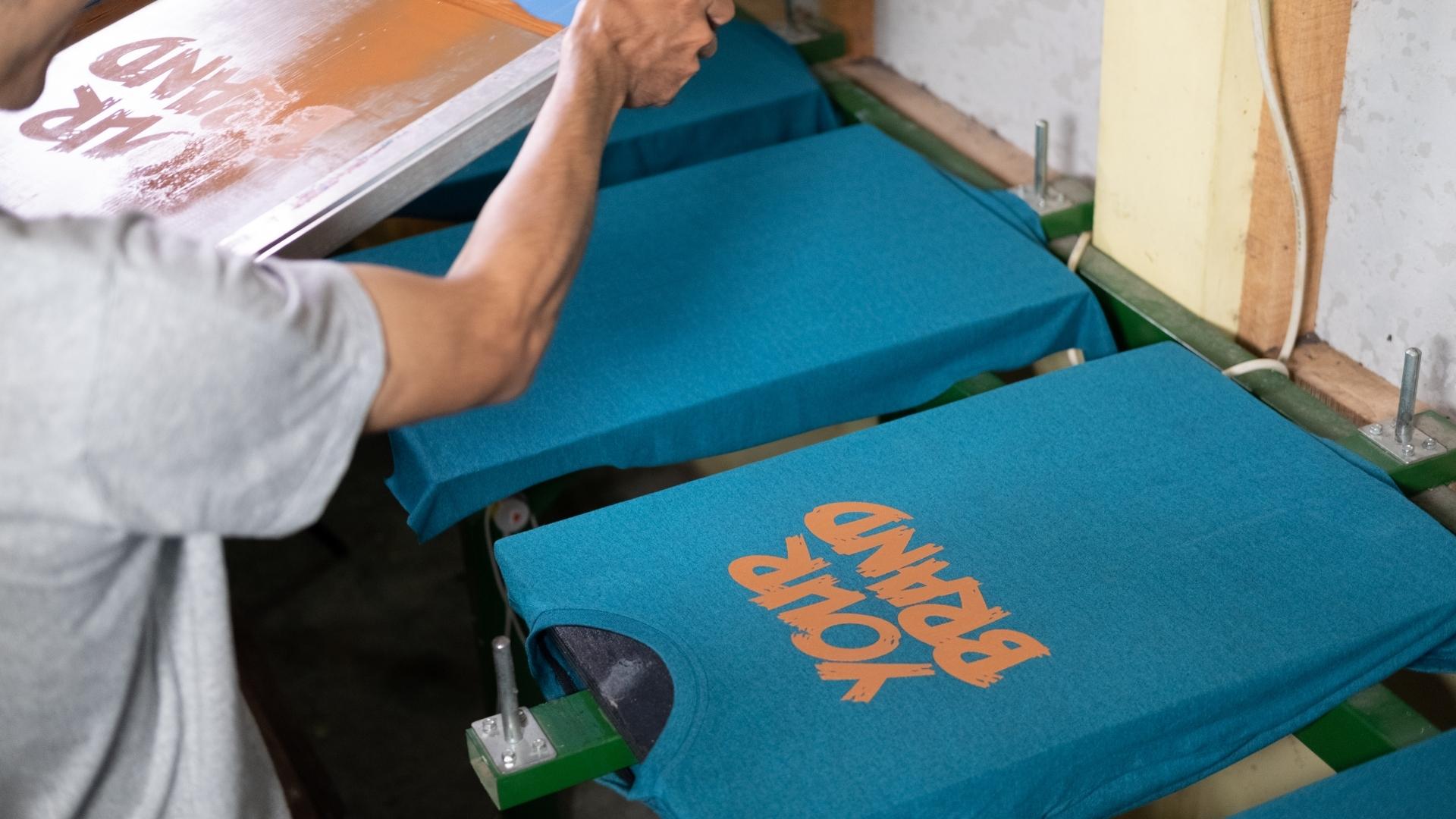The Vital Overview to Recognizing Screen Printing and Its Versatile Makes use of
Screen printing has an abundant background that goes back to ancient times, progressing into an advanced strategy made use of throughout various sectors today. This guide checks out the complexities of the screen printing procedure, outlining its applications in fashion, home, and advertising and marketing style - 10:9 Design Company. Understanding these principles can open up innovative potential for both commercial and imaginative tasks. The adhering to sections will expose important ideas and methods to enhance one's screen printing endeavors
The Background of Screen Printing
Screen printing has origins that trace back centuries, its evolution mirrors the artistic and technical developments of numerous cultures. Coming from in ancient China, the method was initially utilized for decorating textiles and later infect Japan, where it ended up being important to Ukiyo-e woodblock printing. The method shifted to Europe in the 18th century, where it obtained appeal among craftsmens and industrial printers. The invention of photo solution in the 20th century reinvented screen printing, permitting for more intricate styles and higher performance. Musicians like Andy Warhol further drove its popularity, utilizing the medium to create legendary works that combined commercialism and art. By the late 20th century, screen printing had actually established itself as a flexible technique, utilized in style, marketing, and art. Today, it remains to evolve, incorporating digital innovation and increasing its applications throughout various industries.
The Screen Printing Process Explained
Screen printing changes imaginative visions into tangible designs through a series of exact actions. An image is produced and after that transferred onto a screen, usually made of great mesh material extended over a structure. A light-sensitive solution is put on the screen, which is revealed to light, setting in locations not covered by the picture. After rinsing the unhardened solution, a pattern is developed.
Next, the screen is put over the substrate, whether it be fabric, paper, or another material. Ink is then pressed via the open locations of the stencil using a squeegee, depositing the design onto the substrate listed below. This process can be duplicated for numerous shades, requiring different screens for every hue. Finally, the printed item is cured using heat to guarantee the ink adheres appropriately, causing a sturdy, vivid layout ready for use.
Kinds Of Screen Printing Techniques

In addition, specialty methods, such as discharge screen printing, eliminate dye from the material to produce softer prints, while foil screen printing uses metallic aluminum foil to accomplish a glossy finish (10:9 Design reviews). Each strategy offers distinct qualities, accommodating numerous imaginative demands and production scales, ultimately expanding the possibilities within the screen printing domain
Applications of Screen Printing in Various Industries

Additionally, the signage and advertising and marketing fields use screen printing for developing eye-catching display screens and banners. This approach allows for bold shades and detailed layouts that record attention. In electronics, screen printing is used for using conductive inks to circuit boards, essential for part connections. Moreover, the home decoration sector embraces screen printing to produce distinct layouts on fabrics and wall art. On the whole, screen printing functions as a vital device across varied fields, improving items with customized and visually appealing graphics.
Tips for Effective Screen Printing Projects
While embarking on a screen printing project, mindful attention to detail can considerably boost the final outcome. Picking high-grade materials is crucial; this includes the screen, inks, and substratums. Utilizing appropriate mesh counts can affect ink deposition and information resolution. Preparation is similarly vital; detailed cleansing of displays and correct direct exposure times assure crisp prints.
Next, exact enrollment is important for multi-color prints. Using alignment tools can aid accomplish accurate layering. In addition, testing prints on scrap materials prior to manufacturing aids determine prospective issues without losing sources.

Regularly Asked Inquiries
What Materials Are Ideal for Screen Printing on Textile?
Cotton and polyester blends are excellent for screen printing on material as a result of their longevity and ink absorption. Additionally, specialty fabrics like silk or canvas can create distinct textures and finishes, improving the general design high quality.
Just how Do I Tidy and Maintain Screen Printing Equipment?
To preserve and clean up screen printing tools, one need to frequently clean screens with suitable solvents, examine squeegees for wear, oil moving components, and shop all items in a completely dry, dust-free environment to lengthen their life expectancy.
What Are the Environmental Influences of Screen Printing?
Screen printing can have substantial environmental effects, including chemical waste from solvents and inks, water usage throughout cleaning processes, and power intake. Environment-friendly materials and sustainable techniques are vital for reducing these negative effects.
Can Screen Printing Be Done at Home Properly?
Screen printing can be efficiently done at home with the right products and strategies. Enthusiasts can develop high quality prints, though success depends upon their ability level, equipment, and understanding of the process included.
What Are the Costs Connected With Beginning a Display Printing Company?

Starting a screen printing business includes costs for tools, materials, and work space. Initial expenses commonly range from a few hundred to a number of thousand bucks, relying on the scale, high quality of equipment, and wanted production capability.
Screen printing has an abundant history that dates back to ancient times, advancing right into an advanced technique made use of throughout different industries today. One more strategy, rotary screen printing, employs round screens, helping with constant printing on material rolls, therefore enhancing performance for massive productions. Additionally, specialty methods, such as discharge screen printing, eliminate color from the fabric to develop softer prints, while foil screen printing applies metallic aluminum foil to achieve a glossy coating. In the style field, screen printing is commonly used to develop vivid layouts on clothing, making it possible for brand names to display their one-of-a-kind designs. Cotton and polyester blends are ideal for screen printing on textile due to their durability and ink absorption.